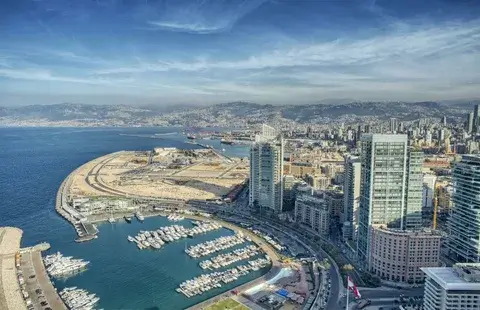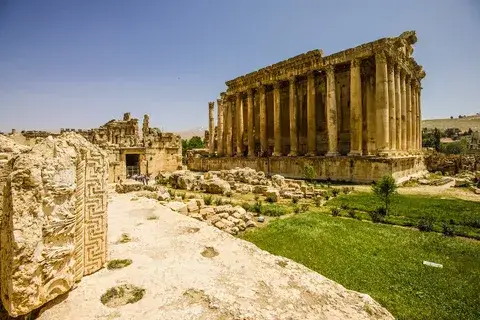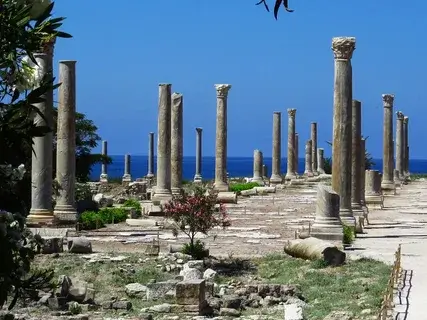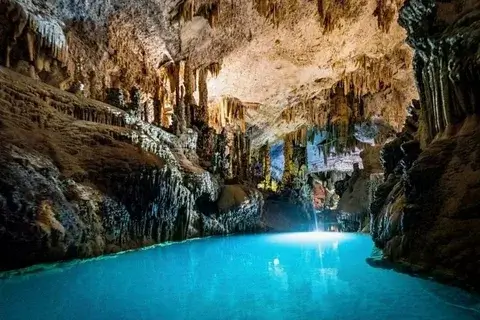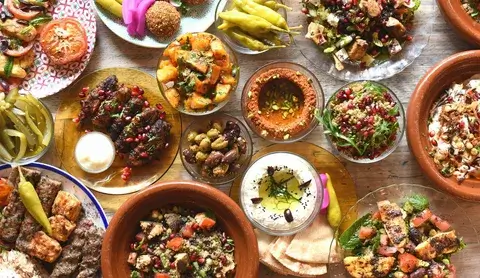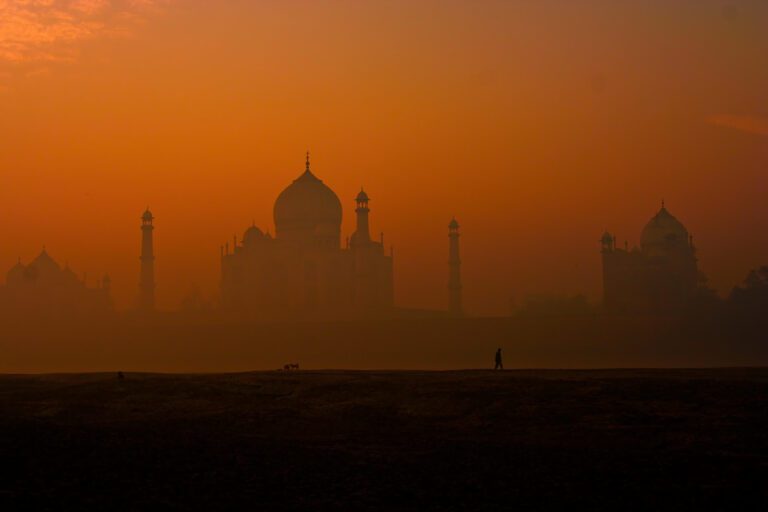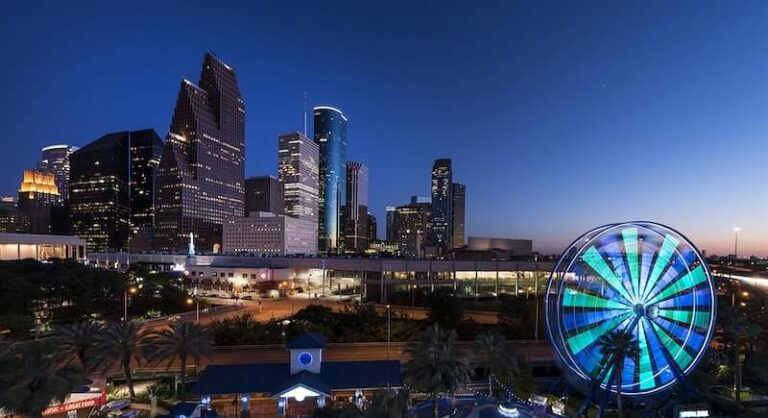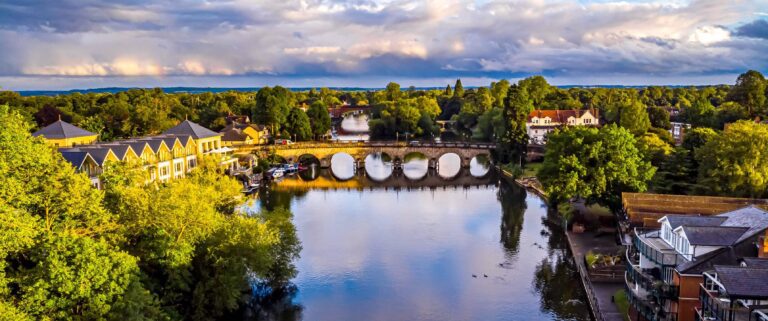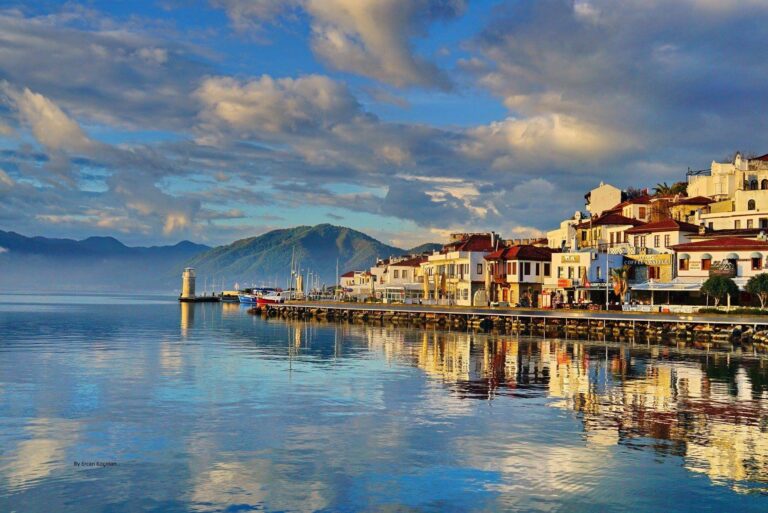Our Top 5 Best Places to Visit in Lebanon
Lebanon Unveiled: Exploring the Mystique of the Middle East
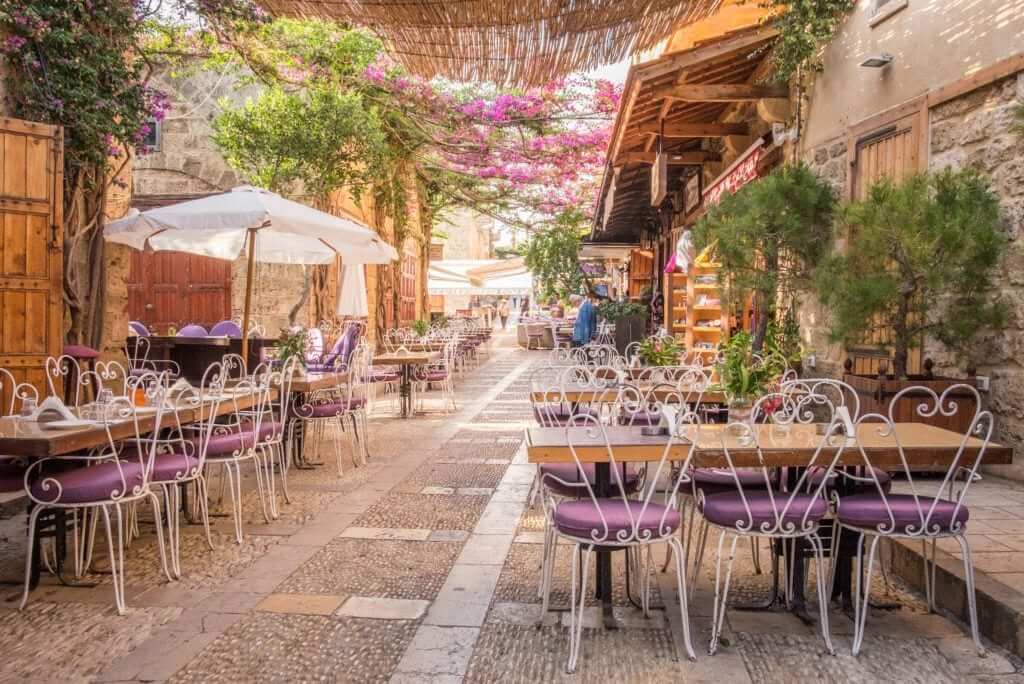
Welcome to the captivating land of Lebanon! Nestled along the Mediterranean Sea, this enchanting country is a treasure trove of history, culture, and natural beauty.
Let’s embark on a journey to discover some of the most mesmerizing places that Lebanon has to offer.
Map of Lebanon

Map Showing Lebanon Location in Asia

Countries Bordering Lebanon
Lebanon is located in Western Asia, and is bounded to the north and east by Syria, to the south by Israel, and to the west by the Mediterranean Sea.
Beirut is the capital city of Lebanon and located on a peninsula at the midpoint of its Mediterranean coast. Beirut is the country’s largest and main seaport and is one of the oldest cities in the world, inhabited more than 5,000 years ago. Lebanon 2023 population is estimated at almost 5.4 million people.
Our Top 5 Best Places to Visit in Lebanon:
1. Beirut: Where the Past Meets the Present
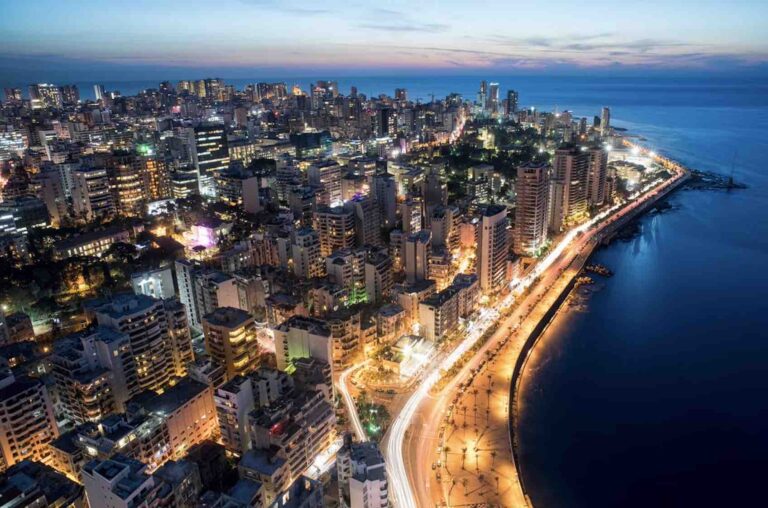

Our odyssey begins in Beirut, the vibrant capital city that effortlessly fuses ancient history with a modern urban vibe. Wander through the bustling streets of the Gemmayzeh and Mar Mikhael neighborhoods, adorned with street art, trendy cafes, and quirky boutiques. Explore the Roman Baths, marvel at the Grand Serail, and pay your respects at Martyrs’ Square, where history has left its indelible mark.
Hidden Gem: Sursock Museum – Immerse yourself in contemporary Lebanese art amid the historic Sursock Palace.
2. Byblos: Echoes of Millennia Past
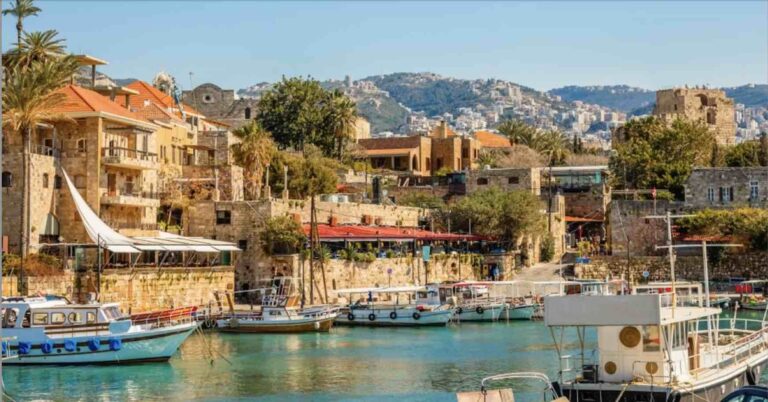

Venture north to Byblos, one of the world’s oldest continuously inhabited cities. Stroll through its charming Old Souk, where history whispers from every stone. The Crusader Castle, the Phoenician Wall, and the Church of St. John the Baptist are a testament to Byblos’ rich past.
Best Spot for Sundowners: Pepe’s Fishing Club – Sip on a cocktail with the sound of the waves as your backdrop.
3. Baalbek: The City of the Sun


Our quest leads us to Baalbek, home to the awe-inspiring Roman ruins of Heliopolis. Stand in the shadow of colossal stone pillars at the Temple of Bacchus, and marvel at the sheer magnitude of the Temple of Jupiter. Baalbek’s archaeological marvels are a testament to Lebanon’s ancient history.
Breakfast Bliss: Abu Kassem – Enjoy a traditional Lebanese breakfast at this local gem.
4. Tyre: Seaside Serenity


Travel south to Tyre, a coastal gem that combines history with Mediterranean tranquility. Explore the UNESCO-listed Tyre Necropolis and the Al Mina archaeological site. Don’t miss the vibrant fishermen’s port and the picturesque Al-Bass Cemetery.
Culinary Delight: El Soussi Restaurant – Savor fresh seafood dishes with sea views.
5. Jeita Grotto: Nature’s Grandeur
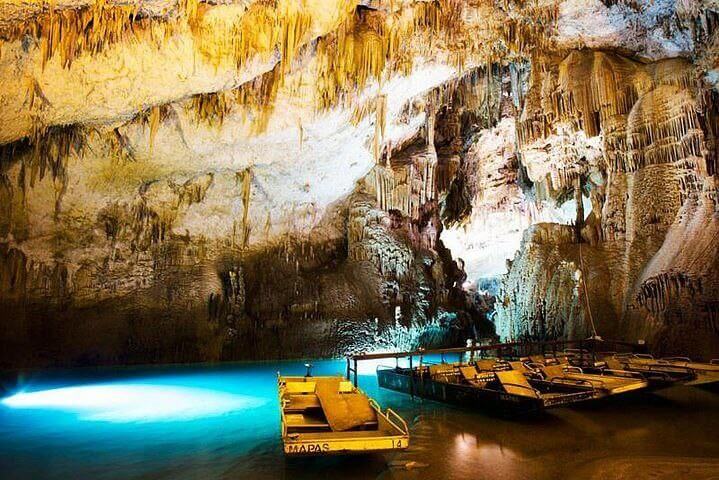

Our expedition concludes at Jeita Grotto, a natural wonder near Beirut. Descend into the depths of the earth to discover a surreal world of stalactites and stalagmites. A boat ride through the lower grotto and a walk through the upper grotto offer an unforgettable experience.
Coffee and Views: Café de Paris – Enjoy coffee with panoramic vistas of Beirut from the hills.
Did we mention the food? EAT!
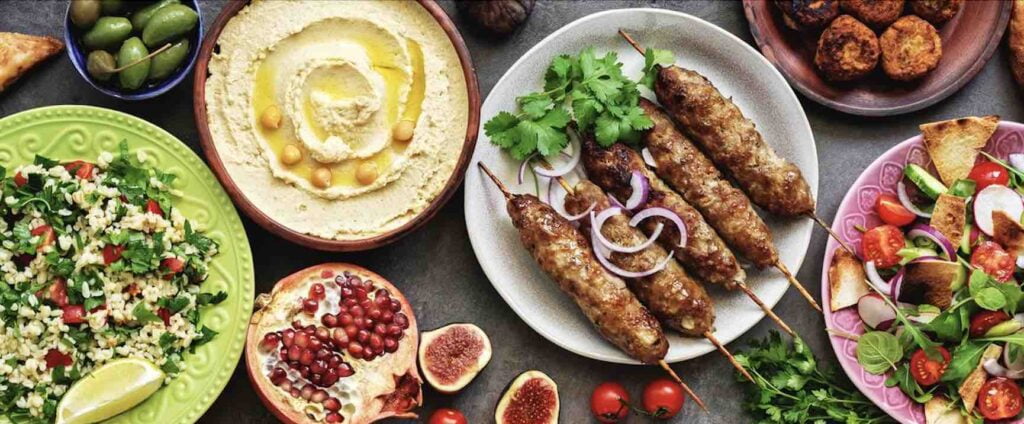
Lebanese cuisine is a vibrant tapestry of flavors that reflects centuries of culinary tradition. Prepare to tantalize your taste buds with a feast of aromatic dishes.
Start with the iconic “Hummus,” a creamy blend of chickpeas, tahini, and lemon juice, often drizzled with olive oil and sprinkled with paprika. “Falafel,” deep-fried balls of ground chickpeas or fava beans, is a popular street food. “Kebabs” are a delight, with tender marinated meat grilled to perfection.
Be sure to savor “Tabbouleh,” a zesty salad of finely chopped parsley, tomatoes, and bulgur, and “Fattoush,” a refreshing mix of toasted bread and fresh vegetables. To satisfy your sweet tooth, indulge in “Baklava,” a delicate pastry layered with honey and nuts, or “Knafeh,” a luscious dessert of shredded pastry soaked in syrup. Pair your meal with traditional “Arak” or “Lebanese wine” for an authentic culinary experience.
Lebanon’s food is a celebration of freshness and flavor that will leave you craving for more.

Essential Things to Know Before Traveling to Lebanon
Before embarking on your journey to Lebanon, it’s essential to be prepared and informed about the country’s culture, customs, and practical travel information. Here are some essential things to know before traveling to Lebanon:
1. Visa Requirements:
- Check if you need a visa to enter Lebanon based on your nationality and the purpose of your visit. Visa requirements can vary, so consult the nearest Lebanese embassy or consulate for up-to-date information.
2. Safety and Security:
- Lebanon has experienced periods of political instability and security concerns. Before traveling, consult your country’s travel advisory to stay informed about the current situation. Follow local news and government advice during your stay.
3. Currency:
- The currency in Lebanon is the Lebanese Pound (LBP). While credit cards are widely accepted in larger cities, it’s advisable to carry cash for smaller shops and businesses, especially in more rural areas.
4. Language:
- Arabic is the official language of Lebanon. English and French are also commonly spoken, particularly in urban areas and among the well-educated population.
5. Weather and Climate:
- Lebanon experiences a Mediterranean climate with hot, dry summers and cool, wet winters. The best time to visit for pleasant weather is during the spring (April to June) and early autumn (September to October).
6. Dress Code:
- Lebanon is a diverse country with varying levels of conservatism. In more cosmopolitan areas like Beirut, you can dress more liberally, but when visiting religious sites or rural areas, it’s respectful to dress modestly, covering shoulders and knees.
7. Cultural Sensitivity:
- Lebanese people are generally warm and welcoming. Respect local customs and traditions, and be mindful of conservative dress codes and local norms.
8. Health and Safety:
- Ensure your vaccinations are up to date before traveling to Lebanon. It’s advisable to have comprehensive travel insurance, including medical coverage. Drink bottled or boiled water and be cautious with street food to avoid foodborne illnesses.
9. Transportation:
- Lebanon has a network of public transportation, including buses and shared taxis (service taxis). Taxis are readily available in cities. Keep in mind that traffic in Beirut can be congested.
10. Time Zone:
– Lebanon operates on Eastern European Time (EET), which is 2 hours ahead of Coordinated Universal Time (UTC+2).
11. Electrical Outlets:
– Lebanon uses Type A and Type B electrical outlets. The standard voltage is 230 V, and the frequency is 50 Hz. If your devices use different plug types, bring suitable adapters.
12. Local Cuisine:
– Lebanese cuisine is renowned for its freshness and flavor. Enjoy dishes like “Hummus,” “Falafel,” “Shawarma,” and “Kebabs.” Lebanese mezze (appetizers) are a must-try, and don’t forget to savor traditional desserts like “Baklava.”
13. Emergency Contacts:
– In case of an emergency, dial 112 for police, fire, or medical assistance.
By keeping these essential factors in mind, you can have a safe and enjoyable visit to Lebanon, a country known for its rich history, culture, and stunning landscapes.
How to Get to Lebanon
Getting to Lebanon involves primarily air travel, as the country is not connected to its neighbors by land due to political and security considerations. Here’s a guide on how to get to Lebanon:
1. By Air:
- Rafic Hariri International Airport (BEY): Beirut’s international airport, Rafic Hariri International Airport, is the main gateway to Lebanon and is located about 9 kilometers (5.6 miles) south of Beirut. It’s the largest and busiest airport in the country, serving both domestic and international flights.
2. International Flights:
- Major international airlines operate flights to Rafic Hariri International Airport, connecting Beirut to major cities worldwide. These airlines include Emirates, Qatar Airways, Turkish Airlines, Lufthansa, and others.
3. Connecting Flights:
- Depending on your location, you may need to take connecting flights through major transit hubs like Istanbul, Dubai, Doha, or Frankfurt to reach Beirut. Many international travelers arrive in Lebanon through these transit points.
4. Visa Requirements:
- Check whether you need a visa to enter Lebanon based on your nationality and the purpose of your visit. Visa requirements vary, so consult the nearest Lebanese embassy or consulate for updated information.
5. Transportation from the Airport:
- After arriving at Rafic Hariri International Airport, you can use taxis, ride-sharing apps like Uber, or the airport shuttle service to reach your destination in Beirut or other parts of Lebanon.
6. Time Zone:
- Lebanon operates on Eastern European Time (EET), which is 2 hours ahead of Coordinated Universal Time (UTC+2).
Please note that flight schedules, visa requirements, and other travel regulations may change, so it’s essential to check with relevant authorities and airlines for the most up-to-date information before planning your trip to Lebanon.
How to Get Around Lebanon
Getting around Lebanon can be an adventure in itself, with a variety of transportation options available. Here’s how to navigate this beautiful country:
1. Taxis:
- Taxis are a common mode of transportation in Lebanon, especially in cities like Beirut. Taxis are typically inexpensive for short distances and can be hailed on the street or booked through ride-sharing apps like Uber or local alternatives.
2. Service Taxis (Shared Taxis):
- Service taxis, also known as “shared taxis” or “service,” are a popular way to travel between cities and towns. These are typically large, shared cars or vans that follow specific routes. Passengers share the ride and the cost.
3. Buses:
- Lebanon has a network of public buses that connect major cities and towns. Buses are generally affordable and offer a way to explore the country economically. Keep in mind that schedules can be irregular, and buses may not always be the most comfortable option.
4. Rental Cars:
- Renting a car is a convenient way to explore Lebanon, especially if you want to reach remote areas or visit less accessible destinations. Be prepared for mountainous terrain and winding roads, and ensure you have a valid international driver’s license.
5. Private Drivers:
- If you prefer the convenience of a private driver and vehicle, you can hire a car and driver for a more personalized experience. This can be arranged through tour companies or with the assistance of your accommodation.
6. Microbuses and Minibuses:
- Microbuses and minibuses are common for shorter distances within cities and towns. They are often used for public transportation and can be a budget-friendly option.
7. Walking:
- In cities and towns, walking can be an enjoyable way to explore. Many areas have pedestrian-friendly streets, especially in the downtown areas of cities like Beirut.
8. Domestic Flights:
- Lebanon is a relatively small country, and domestic flights are available but may have limited routes. If you need to cover long distances quickly, consider domestic flights between Beirut and other cities.
9. Ferries:
- Lebanon has a small but active ferry service connecting coastal cities like Beirut to destinations in Cyprus and other Mediterranean countries. These services are seasonal and subject to availability.
10. Cable Cars and Funiculars:
– In mountainous regions like the Kadisha Valley, cable cars and funiculars provide access to remote monasteries and hiking trails.
11. Language Considerations:
– While Arabic is the official language, English and French are also widely spoken, especially in urban areas and the tourism industry.
12. Traffic:
– Traffic congestion can be an issue in larger cities like Beirut, especially during peak hours. Plan your travel accordingly and be patient when navigating city streets.
Keep in mind that Lebanon’s road infrastructure can vary, and road conditions may not always be ideal, especially in rural or mountainous areas. It’s essential to be prepared and take safety precautions when traveling within the country.
FAQ – Our Top 5 Best Places to Visit in Lebanon and Traveling to Lebanon in General
Traveling to Lebanon: Frequently Asked Questions
1. Do I need a visa to visit Lebanon?
- Visa requirements for Lebanon depend on your nationality and the purpose of your visit. Many nationalities can obtain a visa on arrival, while others may need to apply in advance. Check with the nearest Lebanese embassy or consulate for the most up-to-date information.
2. Is Lebanon safe for tourists?
- Lebanon has experienced periods of political instability and security concerns. While most areas are safe for tourists, it’s essential to stay informed about the current situation and follow government travel advisories. Exercise common-sense safety precautions, especially in crowded areas.
3. What’s the best time to visit Lebanon?
- The best time to visit Lebanon is during the spring (April to June) and early autumn (September to October) when the weather is mild and pleasant. Summers can be hot and humid, while winters are cooler and wetter.
4. What languages are spoken in Lebanon?
- Arabic is the official language of Lebanon. English and French are also widely spoken, especially in urban areas and the tourism industry.
5. What currency is used in Lebanon?
- The currency in Lebanon is the Lebanese Pound (LBP). Credit cards are widely accepted in urban areas, but it’s advisable to carry cash, especially in rural regions.
6. What should I wear when visiting Lebanon?
- Lebanon is a diverse country with varying levels of conservatism. Dress modestly, especially when visiting religious sites or rural areas, by covering shoulders and knees. In more cosmopolitan areas, you can dress more liberally.
7. Is the tap water safe to drink in Lebanon?
- It’s advisable to drink bottled or boiled water in Lebanon to avoid waterborne illnesses. Bottled water is widely available.
8. What are some must-try Lebanese dishes?
- Lebanese cuisine is renowned for its fresh and flavorful dishes. Don’t miss trying “Hummus,” “Falafel,” “Shawarma,” “Kebabs,” “Tabbouleh,” and “Baklava.” Pair your meal with traditional “Arak” or “Lebanese wine” for an authentic culinary experience.
9. How can I get around Lebanon?
- Transportation options in Lebanon include taxis, service taxis, buses, rental cars, private drivers, microbuses, walking, and domestic flights. Choose your mode of transportation based on your itinerary and preferences.
10. What’s the time zone in Lebanon?
– Lebanon operates on Eastern European Time (EET), which is 2 hours ahead of Coordinated Universal Time (UTC+2).
11. What are some cultural customs I should be aware of in Lebanon?
– Respect local customs and traditions, especially in conservative areas. When visiting religious sites, dress modestly, remove your shoes when entering homes, and avoid public displays of affection.
12. Are there any safety tips for traveling in Lebanon?
– Stay informed about the current situation, follow government travel advisories, and exercise common-sense safety precautions. Be cautious with your belongings and avoid large crowds during protests or demonstrations.
By keeping these frequently asked questions in mind, you can plan a safe and enjoyable visit to Lebanon, a country known for its rich history, culture, and diverse landscapes.
Best Places to Visit in Lebanon: FAQ
Frequently Asked Questions – Places to Visit in Lebanon
1. What are the must-visit cities in Lebanon?
- Lebanon offers several captivating cities to explore, including Beirut (the capital), Byblos, Tripoli, Tyre, and Baalbek, each with its unique historical and cultural attractions.
2. What are the top attractions in Beirut?
- Beirut, the vibrant capital, boasts attractions like the Roman Baths, Martyrs’ Square, the Grand Serail, and the National Museum. Don’t miss the lively neighborhoods of Gemmayzeh and Mar Mikhael.
3. Which historical sites are worth visiting in Lebanon?
- Lebanon is rich in historical sites. Explore the ancient ruins of Baalbek, the well-preserved city of Anjar, the Crusader Castle in Byblos, and the Roman Hippodrome in Tyre.
4. Are there any natural wonders in Lebanon?
- Yes, Lebanon offers natural beauty such as the Jeita Grotto, the Cedars of God, and the Kadisha Valley. The stunning Qadisha Valley is a UNESCO World Heritage Site.
5. What’s unique about Byblos (Jbeil)?
- Byblos is one of the world’s oldest continuously inhabited cities. Explore its charming Old Souk, Crusader Castle, Phoenician Wall, and the picturesque harbor.
6. What can I see in Baalbek?
- Baalbek is renowned for its Roman ruins, including the Temple of Bacchus and the Temple of Jupiter. The colossal stone pillars and intricate architecture are awe-inspiring.
7. Are there any beautiful coastal towns in Lebanon?
- Tyre (Sour) is a picturesque coastal town known for its historic sites, beaches, and vibrant port area. Visit Al-Bass Cemetery and the Tyre Necropolis.
8. What’s unique about the Kadisha Valley?
- The Kadisha Valley is a lush, mountainous region with deep cultural significance. It’s home to monasteries, hiking trails, and stunning scenery.
9. Can I explore Lebanon’s mountains?
- Yes, Lebanon’s mountains offer opportunities for hiking, skiing (in winter), and outdoor adventures. Explore the stunning Qadisha Valley and the famous Cedar Forest.
10. Are there any island destinations in Lebanon?
– Yes, Lebanon has islands in the Mediterranean, including Palm Islands Nature Reserve, which is a protected area with diverse wildlife and marine life.
11. What’s unique about Tripoli (Trablos)?
– Tripoli is Lebanon’s second-largest city and offers a rich cultural experience. Visit the historic Old City, the Crusader Castle, and enjoy the local cuisine.
12. What culinary experiences can I have in Lebanon?
– Lebanon is famous for its cuisine. Enjoy traditional dishes like “Hummus,” “Falafel,” “Shawarma,” and “Kebabs.” Explore local markets and try “Baklava” and “Arak.”
13. How can I explore Lebanon’s wine regions?
– Lebanon has a growing wine industry. You can visit wineries in regions like the Bekaa Valley and the Batroun area for wine tastings and tours.
14. Are there any ancient ruins in Beirut?
– Yes, you can explore the Roman Baths, which are located in the heart of Beirut and provide a glimpse into the city’s ancient history.
Lebanon offers a diverse range of attractions, from historic sites and natural wonders to lively cities and coastal towns. Whether you’re interested in history, culture, or outdoor adventures, Lebanon has something to offer every traveler.
You want more on Places to visit in Lebanon? ⬇️ ⬇️ ⬇️
Our Top 5 Best Places to Visit in Lebanon – Final Thoughts
Lebanon, with its fascinating blend of history, culture, and natural wonders, invites the curious traveler to uncover its secrets.
Pack your sense of adventure, your camera, and your appetite for discovery – Lebanon is ready to enchant you! 🇱🇧
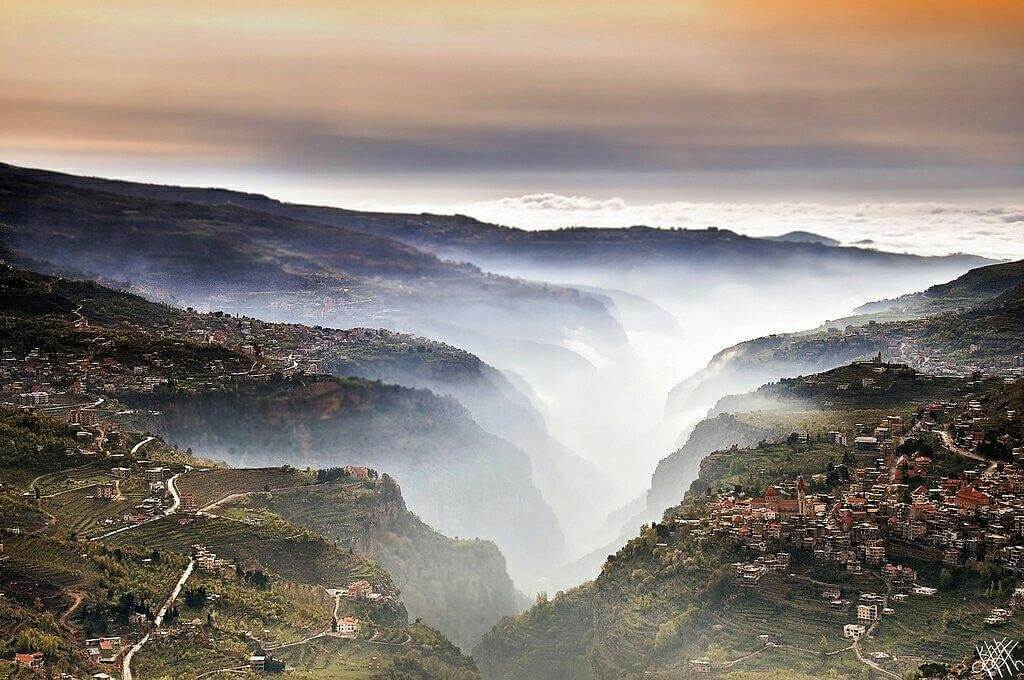
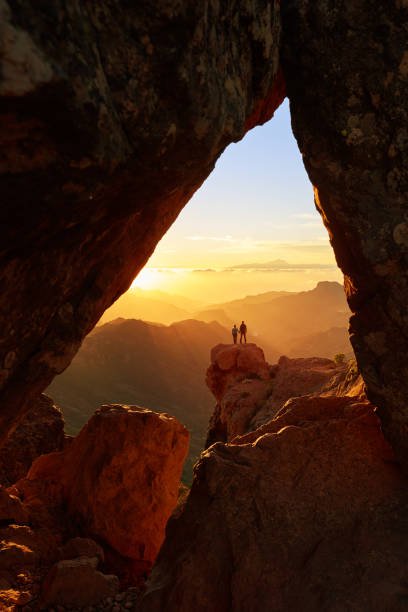
Best Places to Visit in Spain 2023
Spain, a country rich in history, culture, and breathtaking landscapes, beckons travelers with its vibrant cities, stunning beaches, and captivating architecture. From the enchanting streets of Barcelona to the sun-kissed shores of the Costa del Sol, Spain offers a diverse array of destinations to explore..

Europe: A Tapestry of Diversity, Culture and Adventure
Europe, a continent as diverse as it is beautiful, is a traveler’s dream come true. From the snow-capped peaks of the Alps to the sun-kissed beaches of the Mediterranean, Europe offers an enchanting mix of experiences for every type of traveler. Join us as we embark on a journey through the heart of Europe, discovering…

Our Top 5 Best Places to Visit in Kuwait
Discovering Kuwait: Journey Through its Hidden Treasures Hey fellow wanderlusters, let’s dive into Kuwait’s kaleidoscope of culture, where the past meets modernity. I’ve uncovered five must-visit spots for the young and adventurous traveler. From sipping on sweet tea under Bedouin tents to catching epic sunsets, Kuwait is an adventure waiting to happen. Map of Kuwait…

Our Top 5 Best Places to Visit in Dominica
Dominica: Where Adventure Meets Paradise Welcome to Dominica, the “Nature Island” of the Caribbean. If you’re seeking a destination that’s off the beaten path, brimming with natural wonders and adventure, you’ve found it. Here, you’ll explore lush rainforests, soak in rejuvenating hot springs, and dive into sparkling turquoise waters. Let’s embark on a journey to…
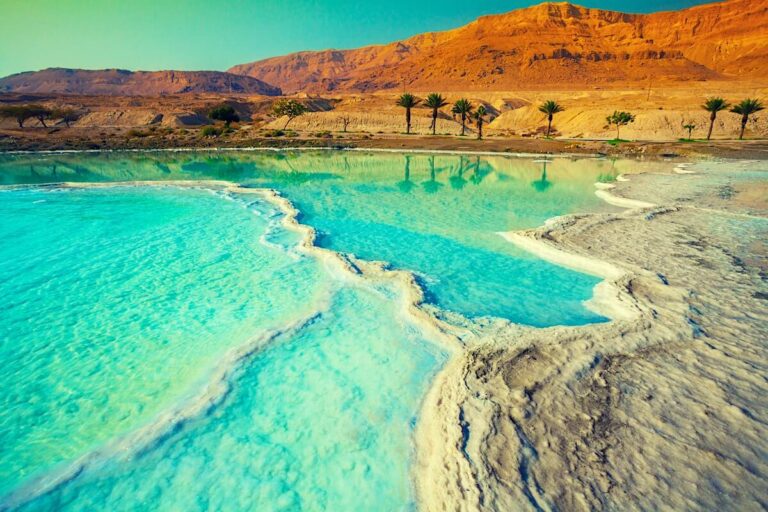
Our Top 5 Best Places to Visit in Jordan
My Journey Through Jordan’s Top 5 Destinations If you’re ready to dive into a world of ancient wonders, surreal landscapes, and incredible experiences, then Jordan is calling your name. Let me take you on a ride through my unforgettable journey as I uncovered the 5 best places to visit in this captivating country. Map of…
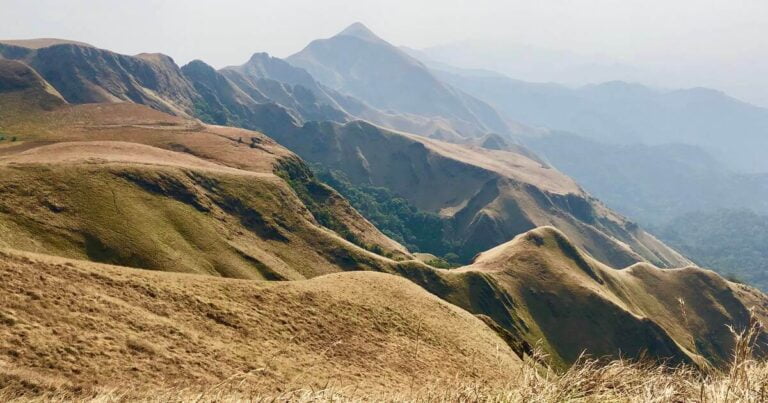
Our Top 5 Best Places to Visit in Guinea
Unveiling Guinea’s Hidden Treasures: 5 Must-Visit Places Are you ready for an off-the-beaten-path adventure in West Africa? Guinea, a hidden gem nestled between Guinea-Bissau, Senegal, Mali, Cote d’Ivoire, Liberia, and Sierra Leone, awaits your discovery. Prepare to be captivated by its vibrant culture, stunning landscapes, and welcoming people as we explore some of the must-visit…

Our Top 5 Best Places to Visit in Iraq
Discovering the Hidden Gems of Iraq Nestled in the cradle of ancient civilization, Iraq is a land where history comes alive at every turn. Beyond the headlines, this Middle Eastern nation offers a tapestry of cultural richness, stunning landscapes, and historical significance. In this travel blog, we’ll uncover seven must-visit places in Iraq that showcase…
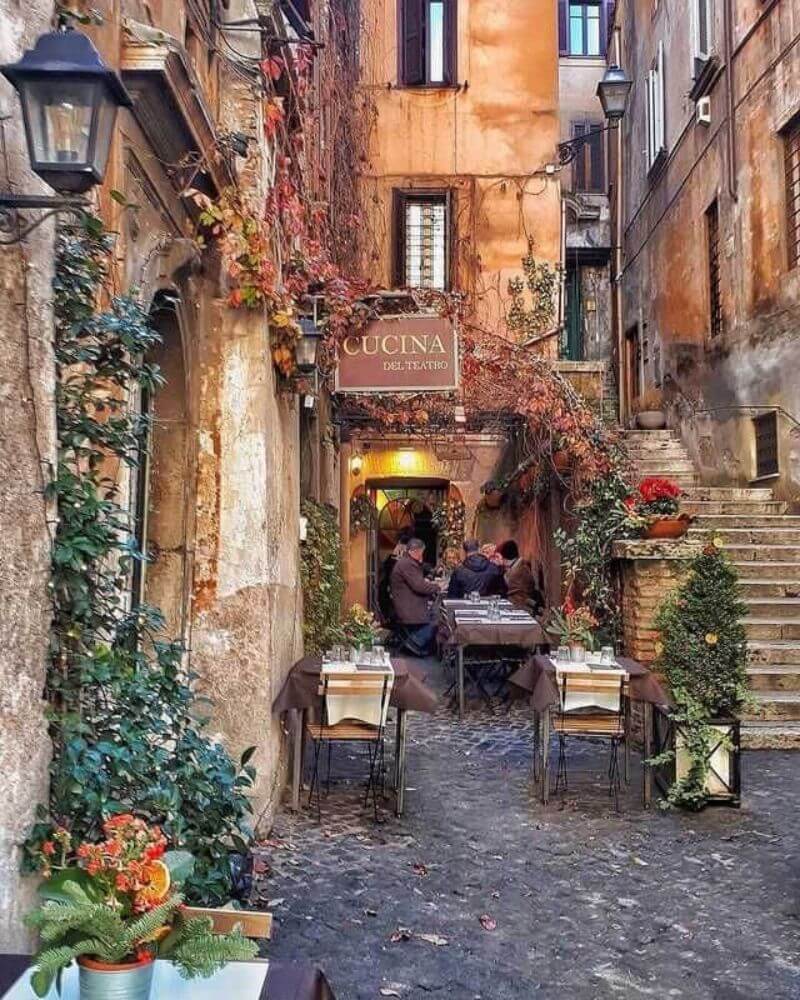
Best Places to Visit in Italy 2023
Italy, a land of romance, rich history, and breathtaking landscapes, beckons travelers with its magnetic allure. From the captivating cities adorned with timeless architecture to the picturesque coastal towns and rolling vineyards, this Mediterranean gem offers a plethora of unforgettable experiences..
Exploring Greece’s Timeless Treasures: Greece Best Places to Visit Top 10
Exploring Italy’s Treasures: The Best Places to Visit in Italy in 2023
Our 10 Best Places to Visit in Venice: Come Explore the Enchanting Floating City
Unveiling the Enchanting Beauty: Our Best Places to Visit in Florence
Our Best Free Places to Visit in New York That are yes, Absolutely FREE!
Our Best 10 Affordable Vacation Destinations if you are on a tight budget.
Our 10 Best Budget Travel Tips: Explore the World Without Draining Your Bank Account.
These are our Top 10 Best Travel Destinations Worldwide 2023
Our Absolute Best list of 10 Less Touristy Places to Travel in Europe 2023
Australia: A Traveler’s Paradise: Best Australian Destinations 2023
Our Top 5 Best Places to Visit in Lebanon – By David John
5 Best Places to Visit in Lebanon Cover Image by rh
Best Places to Visit in Lebanon flickr images licensed under CC BY 2.0
Additional images adobe · colourbox · istock · pexels · shutterstock · unsplash unless otherwise stated.
Were our Top 5 Best Places to Visit in Lebanon helpful to you?
Let us know your thoughts in the comments below..
And if you are looking for a specific piece of information, please do comment below..


